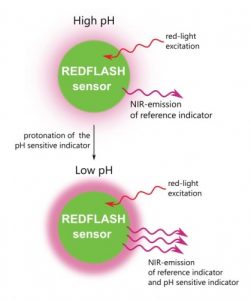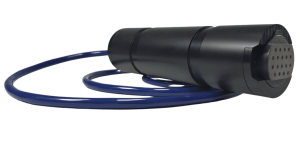Here is a quick look at three of the pH measuring techniques used by our suppliers today: Glass electrode, Optical pH and Solid-state sensors.
Glass electrode sensors
A common method of measuring pH, used in most water quality metres, is the use of a glass electrodes. The glass electrode has actually 2 electrodes – one is the glass electrode and the second is a reference electrode. pH is determined by measuring the potential difference between the 2 electrodes. The glass electrode method is widely used in industry and laboratory applications and provides quick and accurate measurements.
Optical pH sensors
Another technique now used by our supplier PyroScience is optical pH sensors. An optical pH sensor basically comprises two essential parts: A pH sensitive sensor layer and a read-out device (pH meter).
The pH meter consists of a LED and photodiode which excites the compounds in the pH sensor and detects its luminescence emission. The excitation and emission light is transmitted via an optical fibre between the sensor indicator and the pH meter. The optical pH sensor is based on the successful PyroScience REDFLASH technology. The sensor consists of a pH insensitive reference indicator and a pH sensitive luminescent indicator. Both are excited with red-light and show bright luminescence in the near infrared (NIR, 760-790 nm). If the pH indicator is de-pronated at high pH, its fluorescence is quenched and only the NIR emission of the reference indicator is measured. If the pH gets more acidic, the pH indicator is protonated (proton added) and emits bright NIR luminescence and the emission of both indicators is detected.

Pyroscience Optical pH Sensor principle of operation
Solid-state sensors
A final new technique of note is the use of solid-state sensors. HydroTerra is excited to have brought ANB Sensors onboard as they are doing a lot of work
developing solid-state pH sensors. Solid state pH sensors generally use Ion Selective Field Effect Transistor (ISFET’s) technology. This is a new and exciting technology. Some of the key features include in-situ calibration (i.e. no manual calibration), removal of storage issues (can be stored wet or dry), robust as they do not use glass and lower cost. So, a very exciting development.

ANB AQ5 pH Sensor






